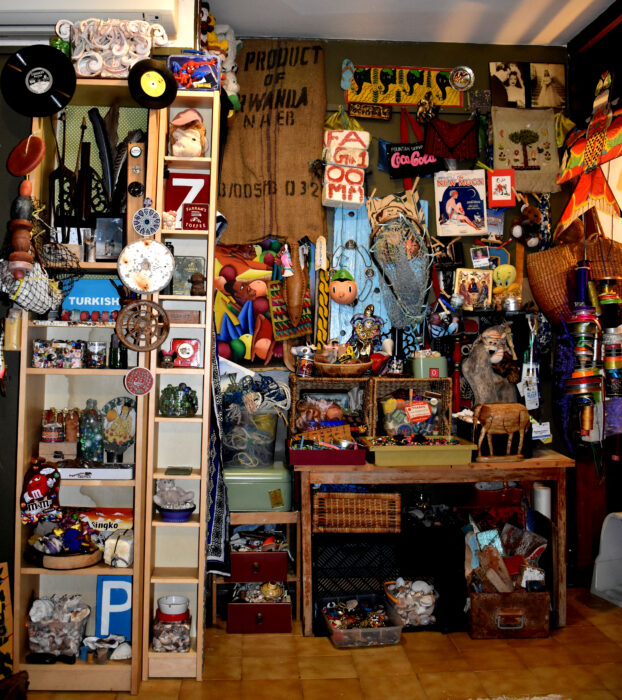
Another iteration of my office in one of the two houses where we lived
in Tanzania.
Am just cleaning up this old trade card while preserving its flavor – all its telltale old bits. The age marks and creases in old things make them so much more delicious than the flat, predictable surface of something new. I had this professor in University, Dr. Virginia Carwell. She was awfully smart. We had my advanced English classes, my last two years in school, in this stone turret at my university. Dr. Carwell could pretty much unpack any piece of literature for me, which speaks to the depths of her intellect. Really, really smart people have this crystal clear way of explaining stuff. My husband does it too, which is both great and annoying. Anyhow, once she was talking to us about plastic flowers and why they’re so ugly. I really, really get depressed in canned environments of all kinds, but dusty plastic flowers just kill me – they are manifestly ugly. About that ugliness in fake flowers she said, “It’s because they don’t die.”
It’s change that makes things beautiful – all that youth in things that are legitimately young is so beautiful – I smile every single time I smell fresh roses I just put in water. I like to touch the petals, too, marvel at flowers – how soft they are, how much nuance there is in every surface of every flower. Then inevitably the roses we buy every week here, they blush out completely so they’re overblown and sloppy. I love that extravagant stage of their flowerhood when they’re unashamed, like sexy, confident, middle aged women. I figure my roses drink too many martinis at that stage and buy lingerie for themselves when I’m sleeping.
Eventually, though, they run their course and they die. But I love them all the time that they are changing, living into the moment, running through their flower life, not sitting there, static, dead. I love things that use themselves up.